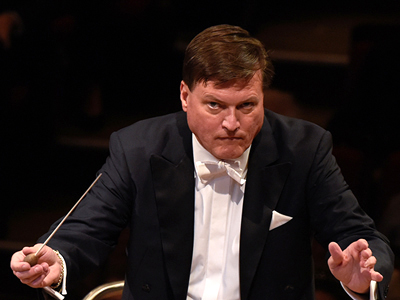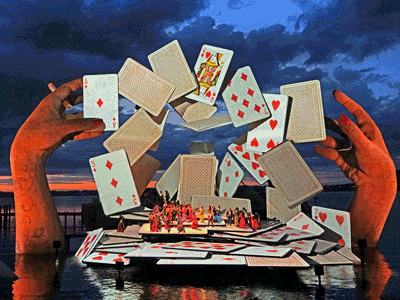By Brian Taylor Goldstein, Esq.
We hope everyone had a great summer. Sorry we haven’t posted in a while, but we’ve been a bit “pre-occupied” with in the world of artist visas. It seems something changes every time Trump breaks wind. So, let’s take a break and go address two completely non-visa related questions that came in over the summer—both involving tribute bands.
Dear Law and Disorder:
I am wondering if I could produce a tribute concert for some singers who are no longer alive. I am not trying to copyright anything. Would I need to get approval from the heirs or estates of the respective deceased singers?
First, let’s clarify. I presume you are producing a concert which will be a tribute “to” some dead singers as opposed to being performed “by” some dead singers as that will, indeed, require the approval of the heirs before you can dig up their dead relatives. On the other hand, if you are planning some sort of Thriller tribute performed by actual zombies, go for it.
The answer to your question depends on how you perceive a “tribute” concert. If your singers will simply be performing a concert featuring all the songs of a deceased artist without pretending to imitate or impersonate the artist or without featuring the images of the artist in the concert (or in the promotion of the concert), then so long as either you (as the producer) or the venue where the concert takes place obtains the necessary performance licenses (ASCAP, BMI, etc.) then you need nothing else. Performance licenses are all you need for a singer to perform the works of another artist, dead or alive, in concert. However, doing anything beyond “stand and sing” could require additional licenses either from the deceased artist’s publisher or the artist’s estate. Depending upon the state in which the deceased artist lived, to use the images of the deceased artist to promote your concert will involve obtaining rights of publicity and endorsement of the artist. Regardless of the state in which the artist lived, you will also need to license the images themselves from the owner of the images (which may or may not be the deceased artist’s estate.) To have your singers imitate or impersonate the deceased artist could also involve obtaining trademark and/or copyright licenses depending upon how “iconic” the artists are which are being “tributed.” (I think I just made that word up.) The key issue to remember is that calling a concert a “tribute” does not alieve you of obtaining whatever rights, permissions, and licenses that may be required.
Dear Law and Disorder:
I have a tribute show and an agent hired me to perform at the venue. I have a signed contract. I did the gig and they did pay for the expenses of my band travel and hotel transportation, but the payment of the band was to be made 3 days after the show. The next day they called me and said that the show was a piece of crap that they want their money back. What is the best way to resolve this issue? I have called them and no response? What do you recommend will be the next step for me?
To paraphrase Judge Judy (who also happens to be on my wish list for the U.S. Supreme Court): “Once you eat the steak, you have to pay for it.”
I love the fact that you have a signed contract. Too many artists don’t even have that. In this case, unless your contract made payment contingent on the venue being satisfied with your performance (which I can’t imagine as that would be insane), then the venue is paying for your services, not your quality. If you provide services and a venue accepts those services, then they have to pay regardless of how crappy your performance may or may not have been. (And there are a lot of crappy performances out there!) Even if you did not have a signed contract this would still be the case. Legally, if Person A knowingly allows Person B to perform or provide services, then this creates an “implied contract” whereby Person A is legally required to pay Person B.
The problem with any contract, signed or implied, is enforcement. Just because someone is legally obligated to do something doesn’t mean they will. That’s what a breach of contract is all about. A valid, enforceable contract merely gives you the right to go before a judge, present you case, and, if you win, have the judge enforce it. Short of that, it merely give you the right to enter into a spitting contest.
You don’t indicate in your question whether “they” refers to the agent or the venue. If the agent isn’t returning your calls, call the venue. If it’s the venue, call the agent. In these situations, you also want to do more than call. Send emails. Send letters. Send letters as attachments to emails. Do whatever it takes to make a pest out of yourself. If either the agent or the venue threatens to “ruin your reputation” or other “bad publicity”, ignore them—if either one had that kind of influence they wouldn’t have stiffed you in the first place. Threatening “bad publicity” to resolve an issue is always an act of desperation by people who are actually incapable of doing so.
Whether or not it’ worth filing a lawsuit depends on how much you are owed. Some amounts are just not worth the time and cost. Some courts offer a “small claims” option with less time and cost. Regardless, while it’s not always possible, in the future always try and negotiate a deposit or, at the very least, payment immediately after the concert.
_________________________________________________________________
For additional information and resources on this and other legal, project management, and business issues for the performing arts, as well as to sign up for our newsletters a nd follow us on social media visit www.ggartslaw.com
nd follow us on social media visit www.ggartslaw.com
To ask your own question, write to lawanddisorder@musicalamerica.com
All questions on any topic related to legal, management, and business issues will be welcome. However, please post only general questions or hypotheticals. Questions will be answered ONLY in future blogs. GG Arts Law reserves the right to alter, edit or, amend questions to focus on specific issues or to avoid names, circumstances, or any information that could be used to identify or embarrass a specific individual or organization. All questions will be posted anonymously and/or posthumously.
__________________________________________________________________
THE OFFICIAL DISCLAIMER: THIS IS NOT LEGAL ADVICE!
The purpose of this blog is to provide general advice and guidance, not legal advice. Please consult with an attorney familiar with your specific circumstances, facts, challenges, medications, psychiatric disorders, past-lives, karmic debt, and anything else that may impact your situation before drawing any conclusions, deciding upon a course of action, sending a nasty email, filing a lawsuit, or doing anything rash!



 nd follow us on social media visit www.ggartslaw.com
nd follow us on social media visit www.ggartslaw.com